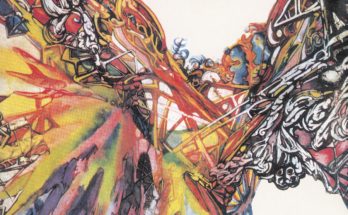By Rodrigo Díaz Guerrero, José María Moreno, y Bernardo Moreno
I went to the movies last week and saw “Everything Everywhere All at Once.” I found the movie to be unexpected, highly original, and emotional—almost a tear-jerker, but definitely not a cliché. However, to my surprise, when I got home after the show and looked online for reviews of the movie, I came across several commentaries of critics that had found the movie dull, easy, predictable, even naïve. I couldn´t avoid a sarcastic smile: these specialized critics, who were paid a few dollars for their opinion, think that they can raise a matter of taste to a universal premise. The work of the art critic has accompanied artworks since these became a commodity. As such, I suppose it became part of the valuation process of an artist’s work. Nevertheless, we still wonder, like so many before us: is the existence of the art critic necessary for the production of art? Does the critic add anything to the work of art? In what follows, we will reply positively to this last question, but what the critic adds to the work of art, we will see, is not what he or she arrogantly thinks, and that is objectivity. Here are, not without irony, three recommendations to dwell on this topic.
Alejandro González Iñárritu, “Birdman,” 2014
Assuming that almost everyone has seen the great film “Birdman”—Oscar for best picture—directed by the Mexican filmmaker, I will now focus on the scene where Riggan (Michael Keaton), desperately grills the art critic, Tabitha Dickinson (Lindsay Duncan): “What needs to happen in someone´s life for them to become a critic? […] That’s just labels […] You mistake all those little noises in your head for true knowledge […] There is nothing here about technique. There is nothing in here about structure. There is nothing in here about intentions. It’s just a bunch of crappy opinions, backed up by even crappier comparisons.” Riggan is losing his grip as he continues to spew his truths. He breaks a glass, evidently overrun by emotions, getting closer to madness, but his acting is superb. He continues haranguing the critic: “None of this cost fucking anything! The f*ck! You risk nothing! […] I´m a f*cking actor!” The critic limits herself to a simple reply: “I´m gonna kill your play.” Cinematically, “Birdman” is a masterpiece in the field of direction and editing. But what most stands out is the confusion, frustration, the absurdity, or even the profound meaning that the characters discover up on their own stage.
Led Zeppelin, “Led Zeppelin,” 1969
As the reader could imagine, in the music industry, there are hundreds of cases in which a commentary ended up aging like milk and the work of art like good wine. This is the case of Led Zeppelin’s first album release, produced by their own guitarist Jimmy Page, which was butchered at the hands of the critic, John Meldensohn, who wrote for Rolling Stone, “Unfortunately (Page) is also a very limited producer and a writer of weak, unimaginative songs, and the Zeppelin album suffers from his having both produced it and written most of it (alone or in combination with his accomplices in the group).” That´s how he began his commentary, closing with the following: “In their willingness to waste their considerable talent on unworthy material the Zeppelin has produced an album which is sadly reminiscent of “Truth” […] They will have to find a producer (and editor) and some material worthy of their collective attention.” As a final detail, Eva Von Zeppelin, the niece of the inventor of the flying machine on the cover of the album, refused to have “a bunch of howling monkeys” using her last name. Because of that, they had to use another name, The Nobs, during a tour around the Netherlands. Funny anecdotes that didn’t age too well.
Paul de Man, “Blindness and Insight,” 1971
This Belgian migrant who found a home in the U.S. after World War II was one of the key pieces behind the literary and postmodern studies that overtook American academia during the 80s and 90s. Even though his legacy has been irremediably tainted by the discovery of his fascist youth back in occupied Belgium, what de Man did for reading is of the same magnitude as what Derrida, his Jewish friend, did for writing; that is, to add insurmountable doses of doubt to any supposed objectivity, to add suspicion to any subjective agency. The object of analysis of the Belgian writer was literature, its rhetoric, and figures of speech. Literature, in the end, is not read literally, and at the same time, literature by itself does not mean anything. Rather, we make it mean something. In non-literary texts, figures of speech are collateral accidents; they do not change the meaning of the text on their own. But in the case of literary works—and here we include any form of narrative technique, even painting or music—metaphors, allegories, similes, etc., are signification engines. The work of the literary critic is to become aware that any literary reading supposes a production of sense—a theory—that is not objectively located in the work of art. One must assume that what is read is either more or less than what the actual words in the page imply.




